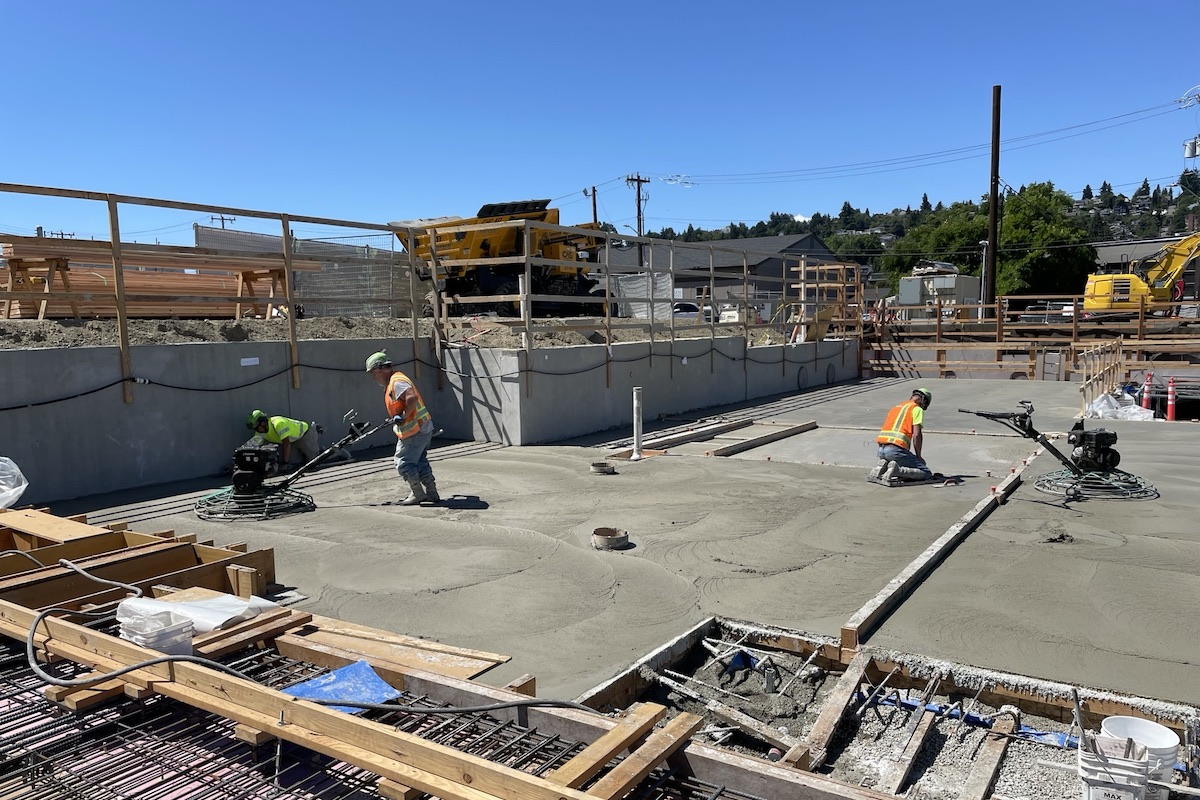The new arterial roadway will connect the city of Lockwood to the Highway 312/Highway 87 intersection in the Billings Heights. To do so, the roadway will span the Yellowstone River, and connect to the Highway 312/Highway 87 intersection in the Billings Heights.
Billings Heights is a heavy residential area and many residents work in Lockwood, points west, and other areas that the Billings Bypass will lead them to.
The Billings Bypass will improve access and connectivity between the two areas as currently going back and forth requires using a distant river crossing. MDT estimates drivers will save 20 plus minutes depending upon the time of day when the bypass is completed.
The need to improve access was driven home when a tornado hit the area in June of 2010. “The tornado was a reminder that access was limited and that an alternative route was needed for public safety,” says Lisa Olmsted, a Public Involvement Manager with DOWL, a civil engineering firm.

| Your local Bobcat dealer |
|---|
| Pape Material Handling |
It’s estimated that the average daily traffic amount will be between 13,000 and 18,000 vehicles in 2040 with 10 percent of the traffic is trucks.
The nine-span steel plate girder bridge with a composite deck will run over 1,850 feet and be over 76 feet wide. Its great length is due to the fact that it will cross both the main channel and a side channel of the Yellowstone River.
From the deck to the bottom of the channel is 80 feet. The northwest side of the bridge will be over 55 feet higher than the southern end, and the bridge is being built with a 3 percent straight grade to accommodate the drop in height.
A second aspect of the project is a roundabout, which is being built on the Billings Heights side of the bridge. “The roundabout will help facilitate traffic when the remaining phases of the project are completed, as commuters will be at a decision point about whether to go to west toward Billings Heights or north toward Old Highway 312,” says James Stevenson, an Engineering Project Manager with MDT, who is responsible for overseeing the project.
In addition to the travel lanes, the bridge will include a 10-foot multi-use path on the west side of the bridge. The installation of the multi-use path was in response to public comment when the project was in preliminary design. On the northwest side of the bridge, the path will connect to a trail system in Dover Park. “Mountain biking is a common recreational hobby in the area,” says Tyler Kerns, a Project Manager for Wadsworth Brothers Construction, the contractor on the project.

| Your local Metso Minerals Industries Inc dealer |
|---|
| PacWest Machinery |
| Westate Machinery Co |
“At the time of the design, pier 4 was located on dry ground but by the time the project started, it was 25 feet out into the side channel of the Yellowstone River,” says Stevenson. “The river and side channels are constantly changing. This can happen because cottonwood logs create jams during spring runoff which, in this case, created an eddy that caused the channel to erode the bank.”
Kerns says access was the number one challenge. “We had to build a trestle bridge for access to the last third of the bridge.” He notes the bridge is like a one-way road, and there can only be one piece of equipment on the bridge, which makes it challenging to stage the project.
“We have to use every inch of real estate we can,” Kerns says. “It makes communication, between us and subs about where everyone has to be and what they need to do, especially important.” Stevenson seconds this and says, “Coordinating inspection and testing duties was a challenge at times.”
The unpredictable river adds to this challenge as well as the team had concerns about winter ice jam and if the meltdown would run into the temporary bridge the team created. Kerns reports there have been no issues so far.
“Sequencing as linearly as you can makes things flow more smoothly,” Kerns says as to how the team has been able to keep the project on schedule.

| Your local Trimble Construction Division dealer |
|---|
| SITECH Northwest |
Financing for the project has come via the federal and state government with the split being 91.58 percent and 8.42 percent. The construction of the finger bridge and building a 2,000-foot section of subgrade from the next phase increased the original bid amount by $1.9 million.
MDT awarded Wadsworth the bid as they were the lowest bidder. This is the first time the two entities have worked together, and it has been a successful partnership. “The project wouldn’t be as successful without the cooperation and communication with Wadsworth,” says Stevenson.
When the Billings Bypass project is fully complete (estimated 2026), the public will have access to improved connectivity and mobility between Lockwood and Billings Heights, and trucks will have better access to the highways. Across the river we go.







































































